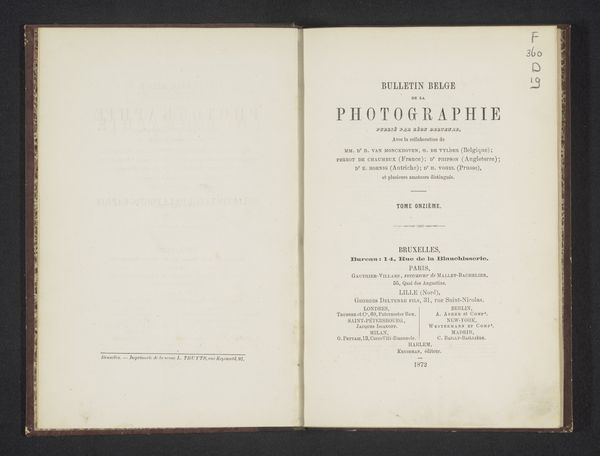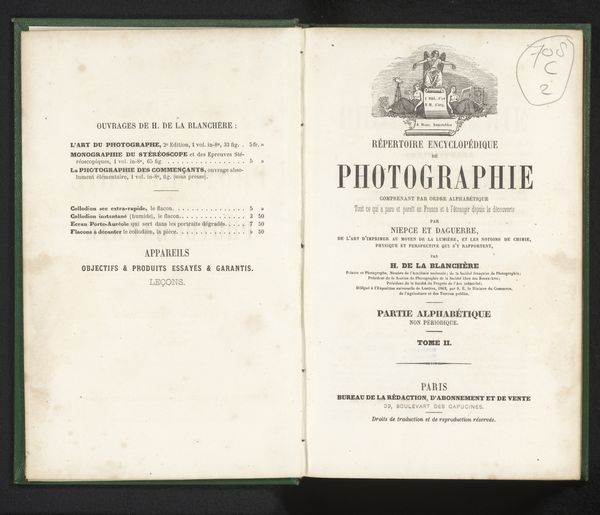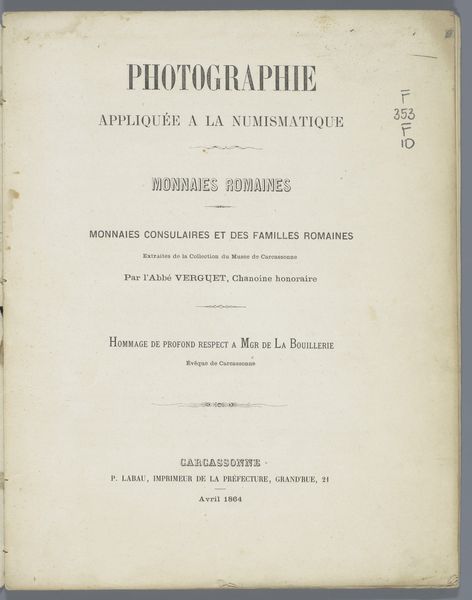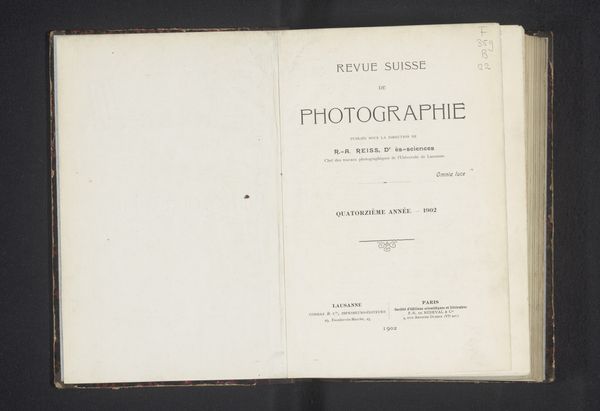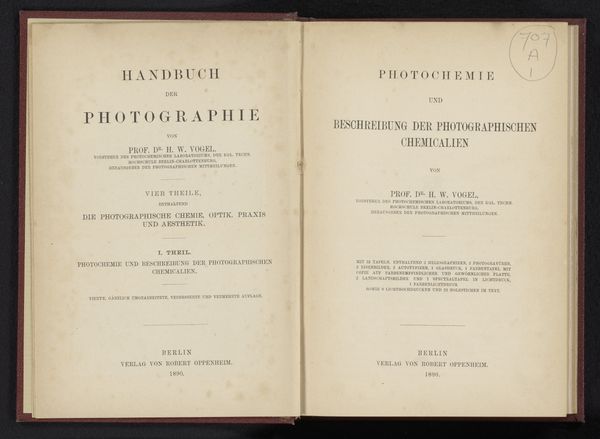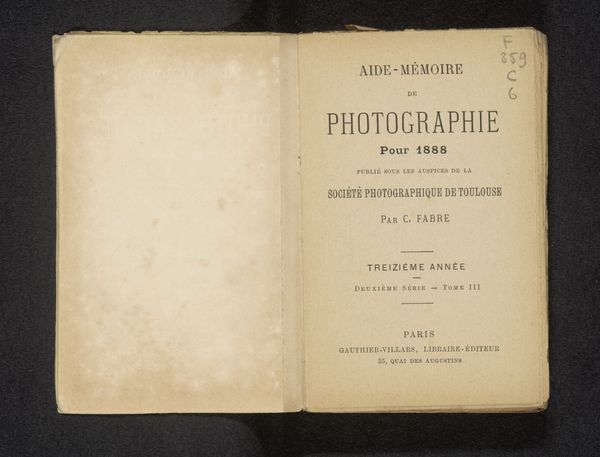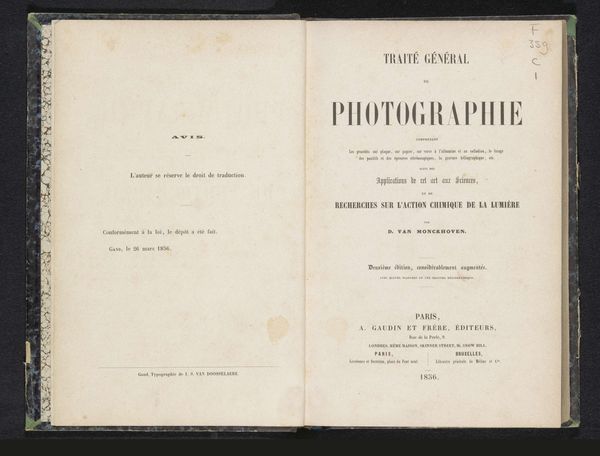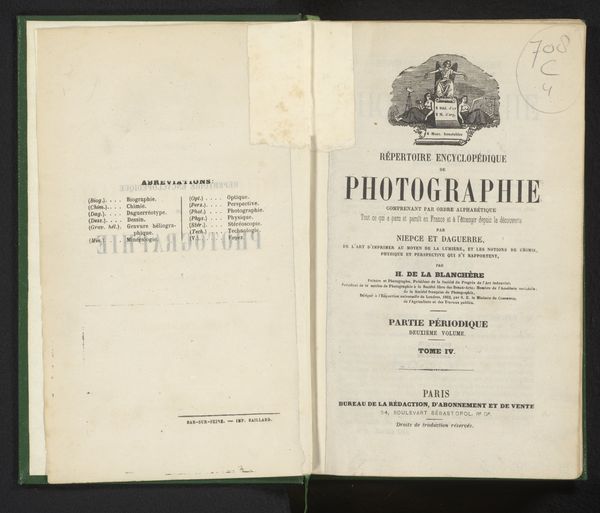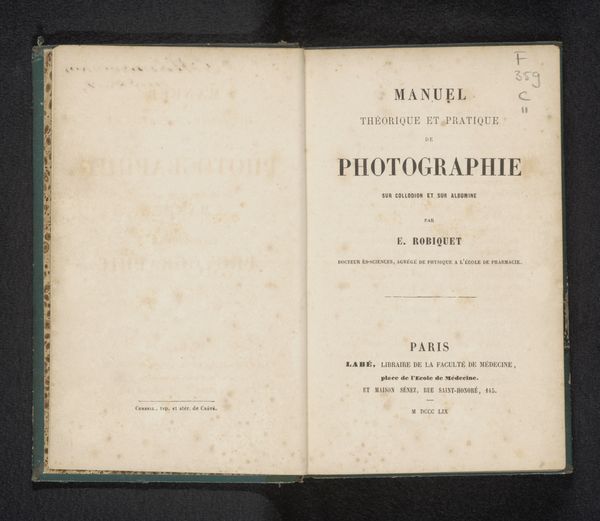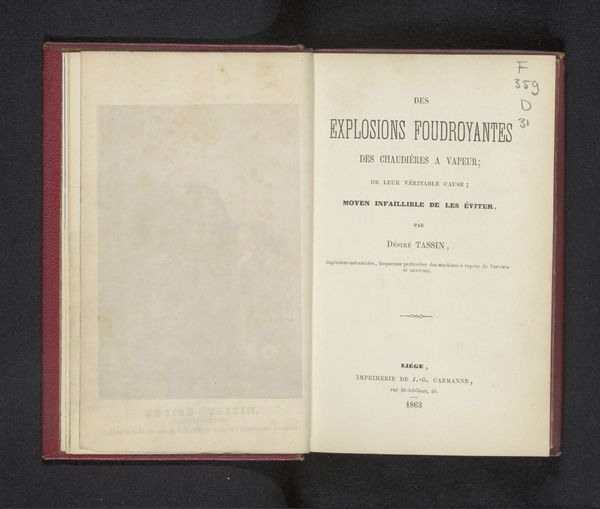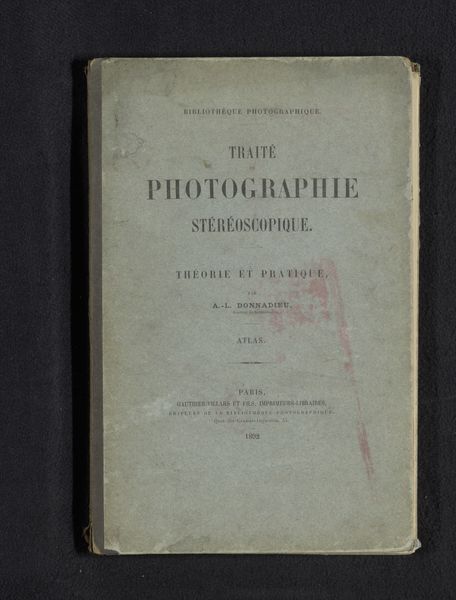
print, daguerreotype, paper, photography
#
16_19th-century
# print
#
daguerreotype
#
paper
#
photography
#
coloured pencil
#
history-painting
#
realism
Dimensions: height 249 mm, width 178 mm, thickness 3 mm
Copyright: Rijks Museum: Open Domain
Curator: Here we have a striking document, "Revue photographique des h\u00f4pitaux de Paris," dating back to January 1870, created by A. de Montm\u00e9ja and Bourneville. It's a medical bulletin featuring photography. Editor: Immediately, the visual imperfection speaks volumes. You can see the worn edges of the paper and smudges that give a glimpse of the object’s age and materiality. Curator: Indeed, the signs of age on this physical document provide a historical texture. These medical reports served as a visual record of the hospitals and the medical practices unfolding during a pivotal era. Consider the rise of clinical observation, and how photography started documenting illness. Editor: Exactly, this would have been circulated by an institutional administrative department with the means to commission a daguerreotype. It’s not some spontaneous snapshot, but a carefully considered image for consumption within a very specific circle. I want to see what their production process looked like, who printed this. Curator: The Revue was produced under the patronage of the "Administration de l'Assistance Publique." Knowing the hospitals of Paris were publicly supported, these publications acted as a form of public engagement. We could understand it as being linked to shifting perceptions and politics surrounding medical care at the time. Editor: And it's not just photography, the object uses typographic craft to legitimize itself. We can also infer about public interest from the line specifying the "Prix du numero: 1 fr." Were they targeting doctors, institutions, a general audience, or all three? How did distribution work, and was it financially successful? Curator: Those are crucial questions, revealing a convergence of medicine, social welfare, and the burgeoning culture of visual documentation. Its creation and distribution say a lot about the values ascribed to medical observation and care. Editor: It does make you think about all the hands that have touched it and its original place of making in photographic studios. This fragile print is like an artifact which also functions as a statement of intention and purpose in image form. Curator: Yes, a unique and complex relic blending artistry, science, and social record. Editor: Definitely, lots of rich avenues for material-based inquiry here.
Comments
No comments
Be the first to comment and join the conversation on the ultimate creative platform.
